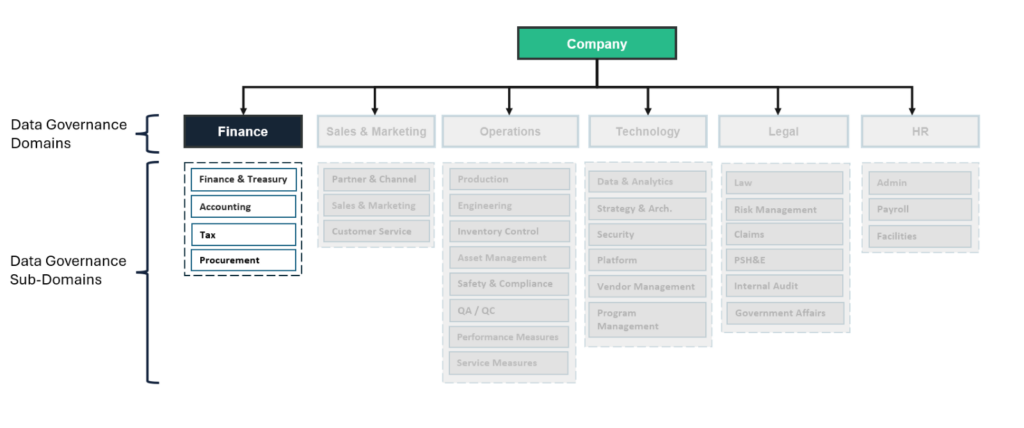Scoping Microsoft Purview: Five Key Questions for a Successful Implementation (Part 3)
Implementing Microsoft Purview is a critical step toward establishing robust data governance to enable better visibility and control over organizational data assets. However, due to the broad business areas and volume of stakeholders involved, many Purview projects are undersold in scope, leading to missed deadlines, unforeseen costs, and underwhelming adoption. Sullexis recommends a ‘start-small’ approach to implementing Purview, designed to help organizations accurately scope and deploy it from the start, building out domains one by one, eating this elephant one bite at a time!
In this blog series, we are covering five key questions that will help to enable a well-planned and successful Purview deployment. In today’s blog we are discussing the third question: Do You Understand the Data Assets Associated with Your Domains and Subdomains?
Do You Understand the Data Assets Associated with Your Domains and Subdomains?
Every domain and subdomain have associated data assets, including datasets, tables, reports, and dashboards. These assets are the foundation of data products within Purview, which provide a way to discover, understand, and consume data across an organization. Without proper visibility into these assets, organizations risk duplication of datasets across multiple departments, redundant reports that provide conflicting insights, and inconsistencies in metadata, tagging, and data definitions. These issues can lead to inefficiencies, misaligned decision-making, and compliance risks. Properly cataloging these assets within Purview is crucial for governance and usability.
Conducting a discovery process to identify all relevant data assets to determine how they map to domains and subdomains is necessary when implementing Purview and should be included in an implementation plan. By cataloging, classifying, and tagging these assets, Purview makes data more discoverable and accessible across the enterprise. However, simply registering assets is not enough. Organizations need to take a strategic approach by aligning data assets with domains and subdomains, ensuring they contribute to meaningful data products.
For example, an HR subdomain might define a Workforce Analytics Data Product that standardizes and validates headcount, attrition, and hiring data. This provides data consistency and facilitates automated quality monitoring.
As we’ve mentioned throughout this blog series, don’t panic at the thought of going through this exercise for every single subdomain. Start small with a single subdomain, learn, and move on. We will discuss this more in our future blogs. Stay tuned!

* This visual shows how data assets are associated to data products in Purview. Depending on where your organization is in their technical journey, semantic models may be mapped into data products as well.
